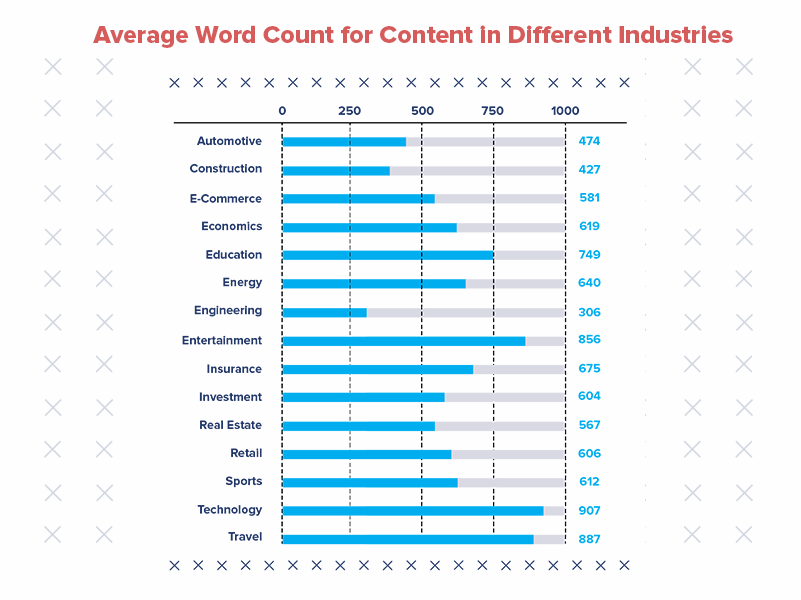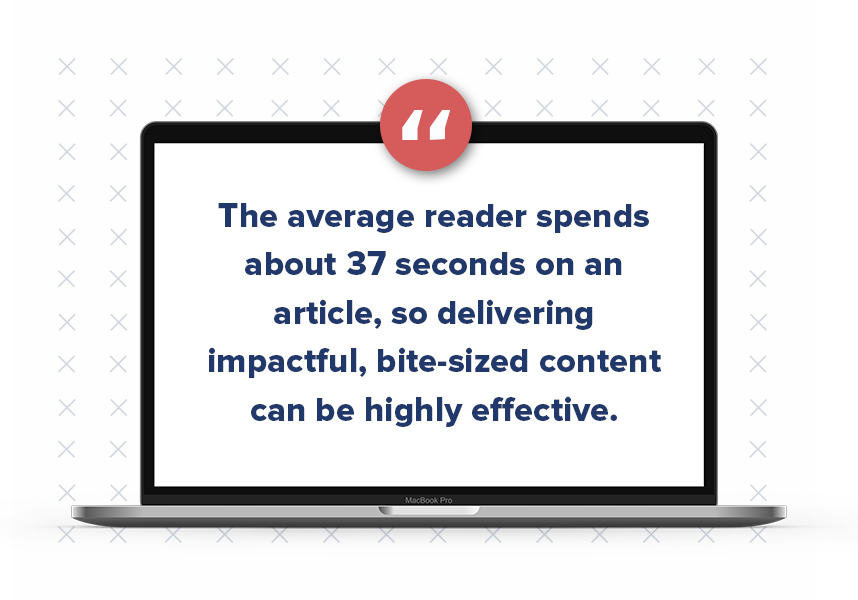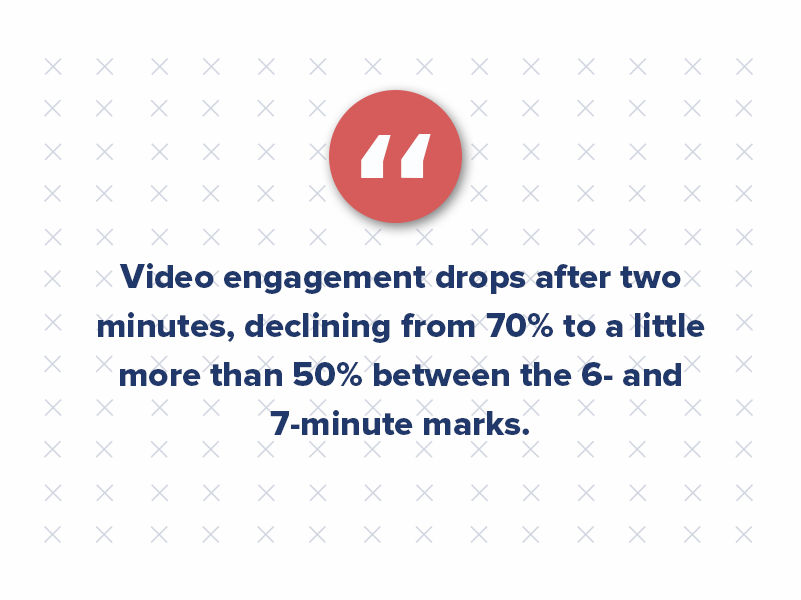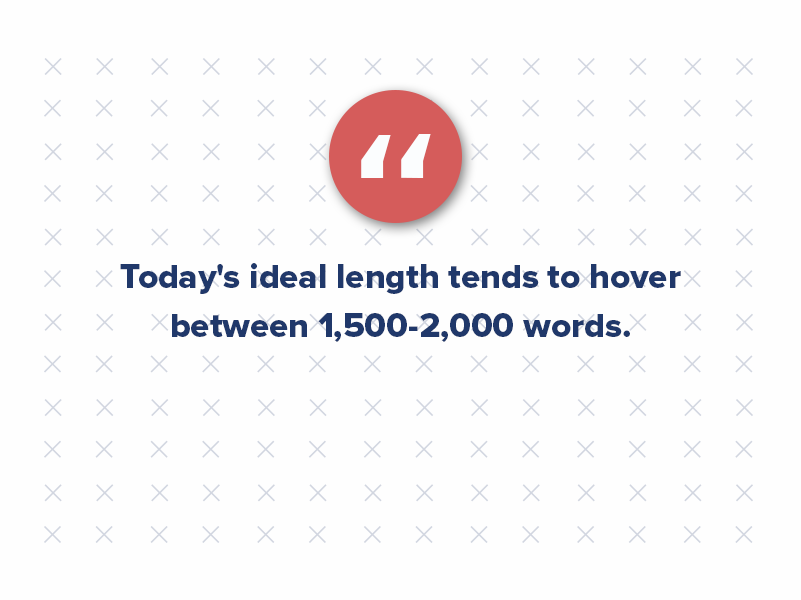Here’s What You Need to Know About Content Length in 2024
With the rise of social media, short attention spans, and AI-generated content, many marketers question long-form content’s relevance. Is it still effective in today’s fast-paced digital landscape, or is it being overshadowed by bite-sized, easily digestible posts and videos?
The answer isn’t as simple as “long vs. short” — both have their place.
But long-form content is far from dead when it comes to SEO, audience engagement, and building authority. In fact, it’s more powerful than ever.
What Is Long-Form Content?
Before diving in, let’s clarify what long-form content is. Long-form content generally refers to blog posts, articles, videos, or other media that exceed 1,200 words or last more than 10 minutes. These pieces provide in-depth information, answering more complex questions and offering detailed insights. This type of content can include everything from blogs and eBooks to long-form video content on platforms like YouTube.
The Power of Long-Form Content for SEO
We often hear: “Nobody reads long-form content anymore.” Attention spans are shrinking — 20 years ago, people focused for about 2.5 minutes, and today, it’s down to just 45 seconds. In many industries, the average word count for content is dropping.

But here’s the thing: people will absolutely focus on long-form content if it’s about a topic they’re passionate about.
The rise of video essays on YouTube — many of which last over an hour — and TikTok testing 15-minute video uploads prove that audiences still crave depth and detail, as long as it’s compelling.
This engagement doesn’t happen by accident. Keeping people’s attention on long-form content takes skill. It requires understanding when to take a deep dive and when brevity is better. And this is where long-form content excels for SEO — it not only captures attention but holds it, offering value that resonates with readers.
Google’s John Mueller has pointed out that search engines favor content that thoroughly addresses user intent, and that’s where long-form content shines.
According to HubSpot, blog posts between 2,100 and 2,400 words perform best in organic search results. This length allows for in-depth keyword optimization and thorough topic exploration and provides ample opportunities for internal linking and backlinks.
Neil Patel’s research backs this up. His studies show that articles exceeding 2,000 words generate more backlinks and social shares than shorter pieces, proving that quality, detailed content remains critical for SEO success. Long-form content is especially powerful in building domain authority and helping websites rank higher on search engine results pages (SERPs), which leads to more traffic and conversions.
And according to Ahrefs data, most (91%) of all online content gets no organic traffic from Google. This isn’t necessarily because of poor heading structures or keyword stuffing; it’s often because the content doesn’t offer the depth or quality needed to attract meaningful engagement. Long-form content helps you overcome this by providing value.
Even as attention spans decline, long-form content remains an indispensable tool for SEO, driving sustained engagement, building trust, and ensuring that your content doesn’t just get read but ranks, too.
Does AI for Long-Form Content Work?
In today’s landscape, the use of AI for long-form content is becoming more common. AI tools like Gemini, Jasper, and ChatGPT can help generate ideas, structure articles, and even write large portions of long-form content. But while AI can assist with the creation process, it’s still essential to layer in human expertise, creativity, and insights to produce high-quality content.
AI is great for scaling content production, but it may struggle to deliver nuanced, audience-specific details that make content engaging. In short, AI can help create long-form content, but it shouldn’t fully replace human input, especially when your goal is to connect with readers and offer unique perspectives.
Long-Form vs. Short-Form Content: Which Performs Better?
It’s not a battle of long-form vs. short-form content; rather, both types of content have their place in a balanced marketing strategy.
The Case for Short-Form Content
While long-form content has undeniable benefits, short-form content still plays a crucial role in marketing strategies, particularly when capturing quick attention and providing easily digestible information. In a world of fleeting attention spans, short-form content — whether it’s videos, social media posts, or concise blog entries under 1,000 words — can quickly engage users and drive immediate action.

When it comes to written content, short-form blogging offers an opportunity to stay top-of-mind with your audience without overwhelming them. According to HubSpot, the average reader spends about 37 seconds on an article, so delivering impactful, bite-sized content can be highly effective, especially when users are looking for quick answers or need a fast overview. Blogs of 500-700 words, for instance, are perfect for addressing specific questions, ranking for targeted keywords, and keeping readers engaged without requiring a significant time investment. Listicles are a great way to pack in a lot of high-value content and specific keywords while making your content easily scannable, digestible, and succinct.
Short-form written content also works well for brand storytelling and building relationships with customers. Regular blog posts that are brief but packed with value can foster loyalty and ensure your audience keeps coming back for more. As the demand for faster information grows, more companies are using short-form blogs to drive email sign-ups, retargeting ads, and social shares.
The same principle applies to short-form video content, which has seen an explosion in popularity thanks to platforms like TikTok, Instagram Reels, and YouTube Shorts. These formats are perfect for audiences looking for quick entertainment or fast solutions to problems.

Vidico reports that video engagement drops after two minutes, declining from 70% to a little more than 50% between the 6- and 7-minute marks. Various reports state that videos 2 minutes long get the most engagement, making them perfect for platforms where users scroll quickly and want immediate gratification.
Social media audiences, especially younger demographics like Gen Z, are drawn to quick, snackable content that delivers instant value. Shorter videos are easier to consume, share, and engage with; they also align with shorter attention spans. Research also suggests shorter videos align with shorter attention spans and are more likely to sustain viewer attention.
The Case for Long-Form Content
Despite the rise of short-form media, long-form content is more effective for in-depth topics and SEO. When you answer complex questions or provide comprehensive guides, your content is more likely to attract links, shares, and higher engagement over time.
The ideal blog length has always been a moving target. At one point, the wave of 750-word posts dominated the landscape, but as content marketing matured and competition grew, blog posts expanded to over 2,500 words to offer more comprehensive, valuable insights. This trend was further fueled by strategies like the SEO skyscraper technique, where longer content aimed to outperform competitors and earn backlinks. It wasn’t uncommon for articles to exceed 3,000 words, and many thought leaders (Criterion.B included) advocated for more in-depth content to meet rising expectations.
In fact, research supported the push for longer content. HubSpot found that the ideal blog length fell between 2,100 and 2,400 words. Similarly, Semrush revealed that articles over 3,000 words generated 138% more search traffic.

However, with the surge of AI-generated content and the influence of the “TikTok Effect,” audiences now crave content that gets to the point faster. Today’s ideal length tends to hover between 1,500 and 2,000 words, striking a balance between depth and brevity. Neil Patel agrees, stating that the ideal content size is smaller now and quicker to reach the point. The key takeaway is that while word count still matters, quality and value are now the real metrics of success.
The performance of long-form video content also varies depending on the topic shared. On platforms like YouTube, longer videos (10 minutes or more) tend to rank higher in search results and generate more ad revenue. YouTube’s algorithm favors long-form video content because it keeps users on the platform longer, increasing engagement metrics. Some of the best long-form content on YouTube includes educational videos, detailed product reviews, and deep-dive tutorials.
For long-form video content, quality still matters. It’s not just about the length — it’s about how effectively the video engages, educates, or entertains your audience. A well-produced, long-form video can dramatically boost your channel’s visibility and lead to higher engagement, especially if paired with the right SEO strategies.
How Long Should Your Content Be?
So, what is considered long-form content, and how long should your content really be? The answer depends on your goals:
- For SEO: Articles between 2,100 and 2,400 words perform the best, according to HubSpot.
- For Engagement: Longer blog posts (around 3,000 words) and long-form video content (10+ minutes) are ideal for creating in-depth, shareable pieces that drive traffic.
- For Social Media: Short-form content (under 2 minutes for videos, under 1,000 words for posts) tends to get the most engagement, particularly on platforms like Instagram and Twitter.
- For Lead Generation: Both long and short content can be effective, but long-form content excels in building trust and nurturing leads over time.
The Verdict: Long-Form Content Is Here to Stay
Is long-form content dead? Absolutely not.
In fact, it plays a critical role in building brand authority, improving SEO, and driving qualified leads. However, it’s essential to integrate short-form content as well, especially for social media engagement and brand visibility.
The key is balance. Create a mix of long-form vs. short-form content that caters to different platforms and audience preferences. Use long-form content to dive deep into topics, improve SEO, and establish authority, while short-form content can be used for brand awareness and quick engagement.
Whether it’s a 3,000-word article, a detailed case study, or a short, snappy video, content that delivers real value will always have a place in your marketing toolbox. So, while shorter attention spans might drive the demand for short-form content, long-form content isn’t going anywhere — and it’s still a crucial part of a well-rounded marketing strategy.




